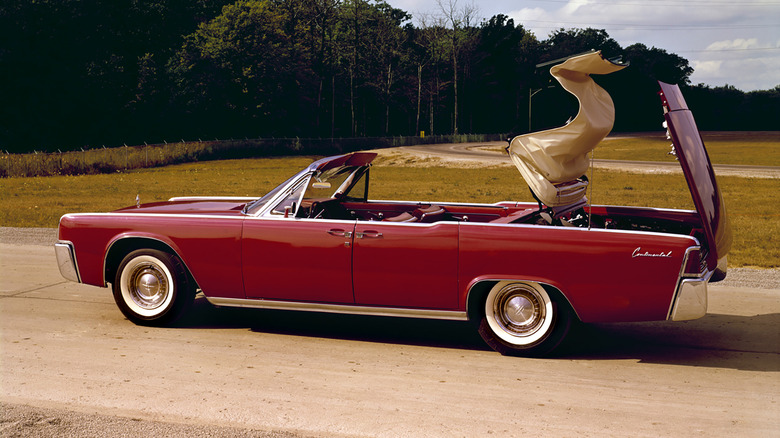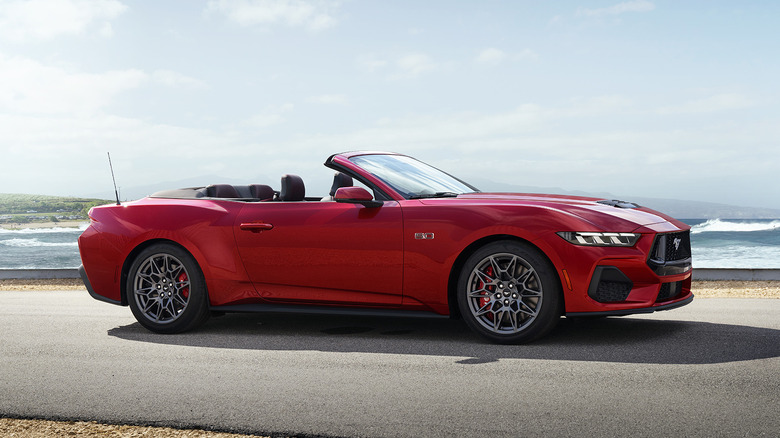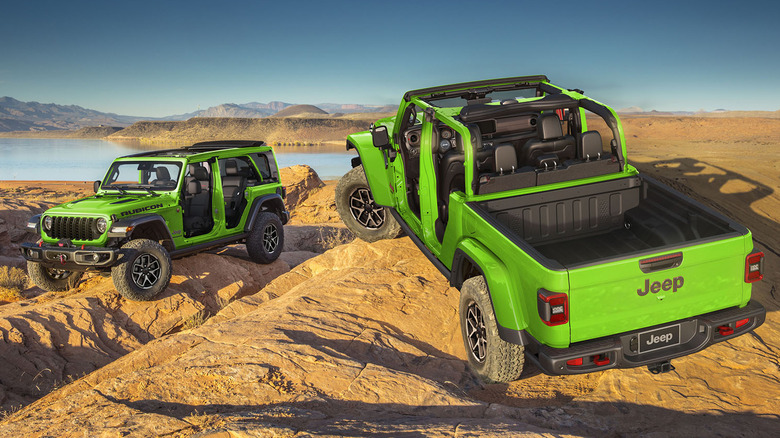Why Convertibles Are Almost Always Two-Door Cars
Though there aren't nearly as many open-top convertibles on today's market as there have been in the past, cars with retractable roofs still have a lot of loyal fans, particularly in areas with nicer climates. Even among these open-top cars, you'll find everything from small lightweight sports cars like the Mazda MX-5, to the more luxury-oriented offerings like the Mercedes AMG CLE 53.
Looking at both current convertible offerings and those from the past, you'll find that the overwhelming majority of convertibles have just two doors. Is this just because two-door cars aesthetically make for better convertibles? Is there just no demand for four doors and an open roof? Or is there an engineering reason why four-door convertibles are so rare?
With most modern cars using unibody construction, there are indeed some significant engineering reasons why four-door cars don't make for good convertibles. Not only would this make the cars less structurally sound, but there's no place to attach a second set of doors if you wanted to. There are, however, some significant exceptions to this rule once you start talking about body-on-frame vehicles.
No roof, no problems?
While structural rigidity in cars has come a long way in the modern era, there's still no getting around the fact that a convertible version of car is going to lose a fair amount of rigidity when compared to its fixed roof, coupe counterpart. Especially where the vehicle's body itself makes up its general structure, a key difference between unibody and body-on-frame construction.
The roof of the vehicle, besides providing occupants with a shield from the elements, is a key part of a car's construction, tying into the car's body structure front to back, and across its width. Still, a two-door car can be made into a convertible pretty easily. Yes, you lose rigidity without a permanent roof, but this is made up for with things like additional body bracing. Combined with the mechanism of the top itself, this additional bracing usually makes convertibles significantly heavier than a comparable coupe.
To go topless on a four-door car is nearly impossible. Not only would you have the same structural issues, but more crucially, by its nature, a convertible doesn't have a structurally integrated B-pillar that the rear doors can be hinged to. On a unibody platform, at least, the idea of a four-door convertible is basically a non-starter. Sure, there are some aftermarket unibody four-door convertible conversions out there, but not only are they awkward-looking, it's unlikely any factory engineer would sign off on their structural rigidity or general safety.
The real four-door convertibles
Things are different when you are talking about vehicles with body-on-frame construction, where there's a separate structural frame with the body placed on top of it. While there aren't any body-on-frame passenger cars on today's market, back when they were more common, you'd sometimes get cars like the Lincoln Continental convertible, which had four suicide doors that opened up into a spacious open-air cabin. The Lincoln was able to do this because the frame of the car did the heavy structural lifting, rather than the body itself. Yet still, even back in the '60s, four-door convertibles were extremely rare.
What's not rare today is a different type of four-door convertible: The off-road 4x4. The Jeep Wrangler and Gladiator, as well as the Ford Bronco can be had with four doors and removable tops. That's because, not only do these 4x4s have body-on-frame construction, they also have a permanent roof structure and B-pillar in place. Instead, it's the roof panels, and also the doors themselves, that are removable.
The Wrangler and the Bronco might not deliver the same flavor of open-air motoring as your more traditional road-going convertible, but if you want a modern, safe vehicle with four doors and the open sky around you, there's no other choice.


